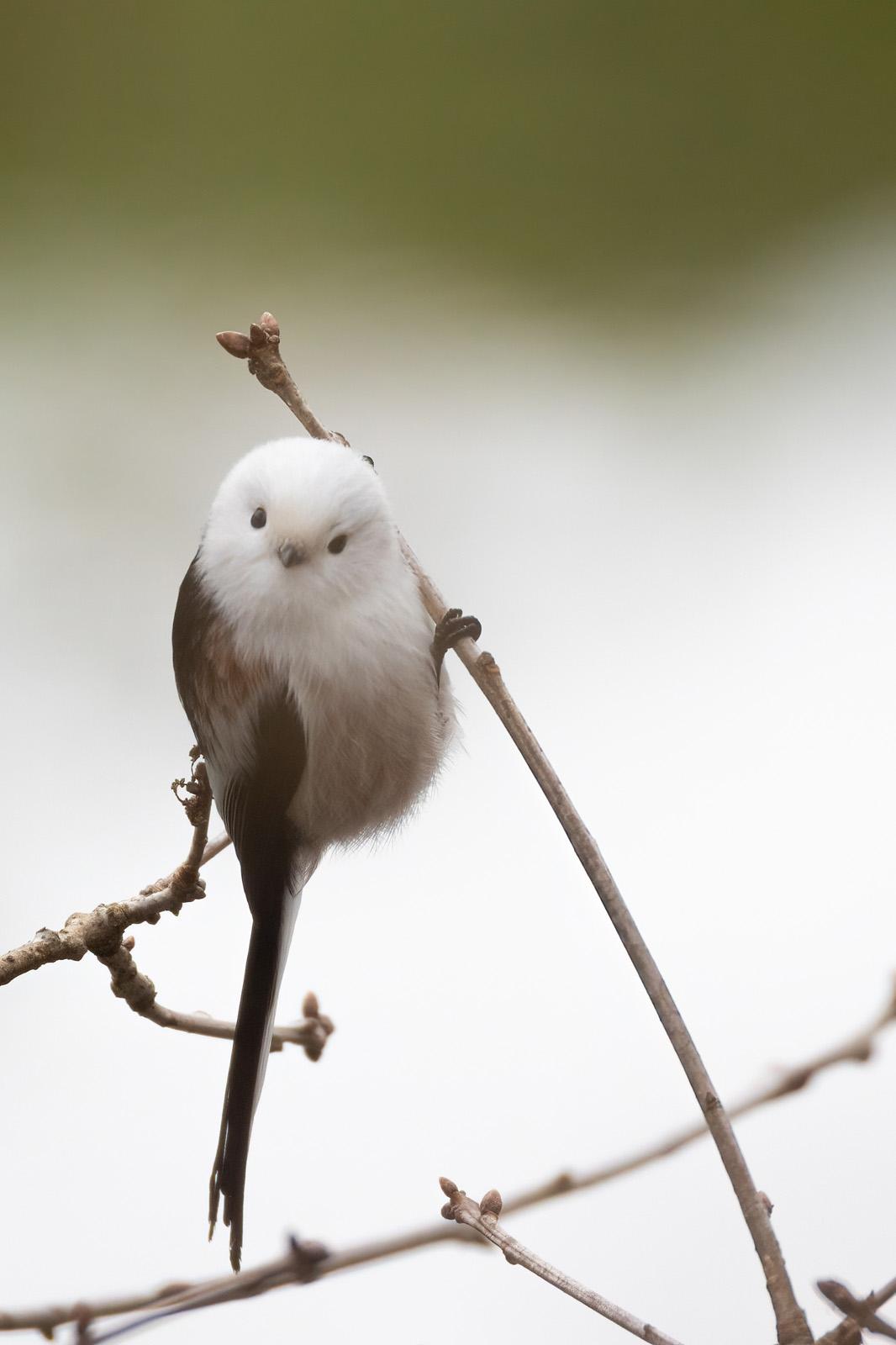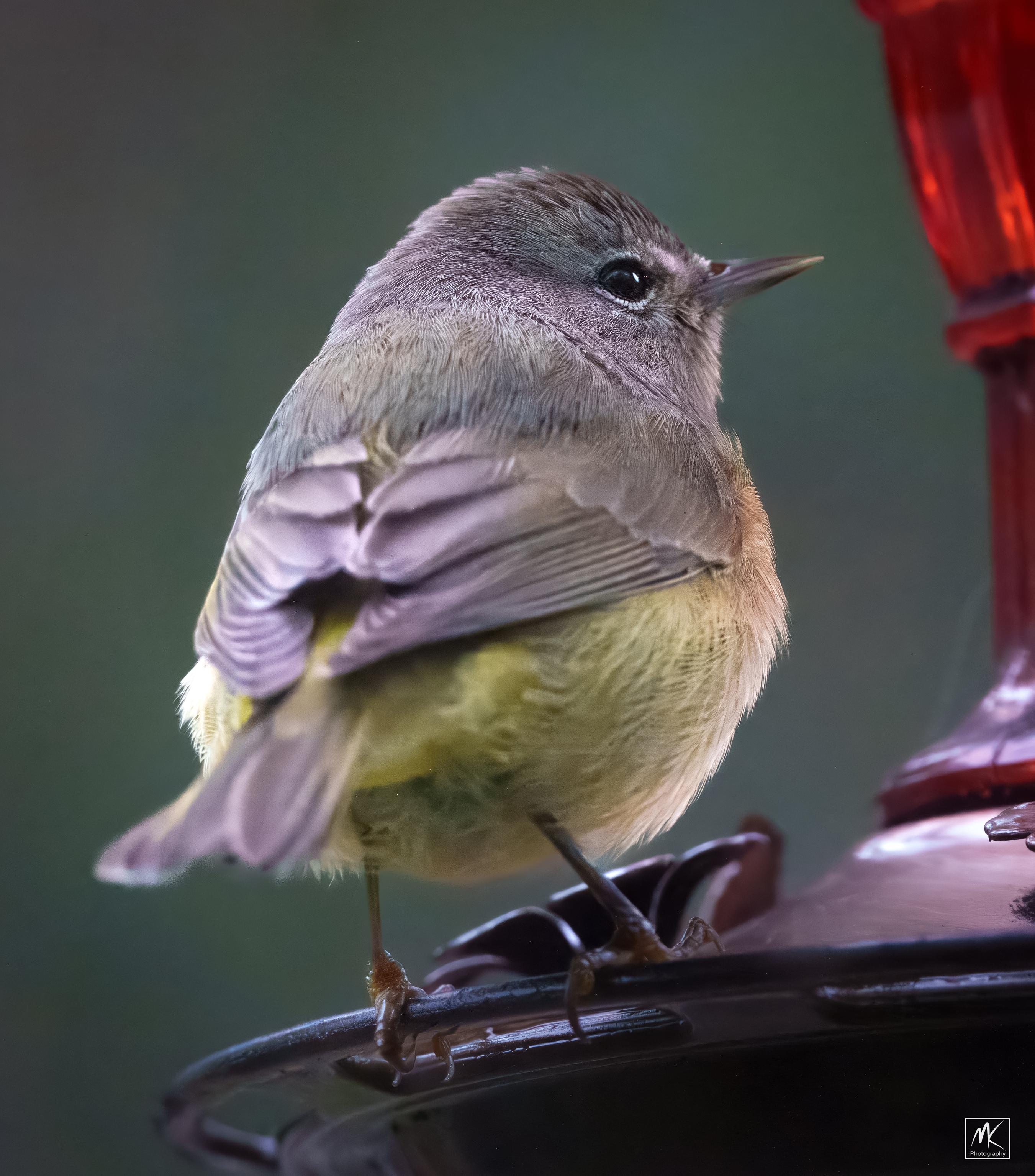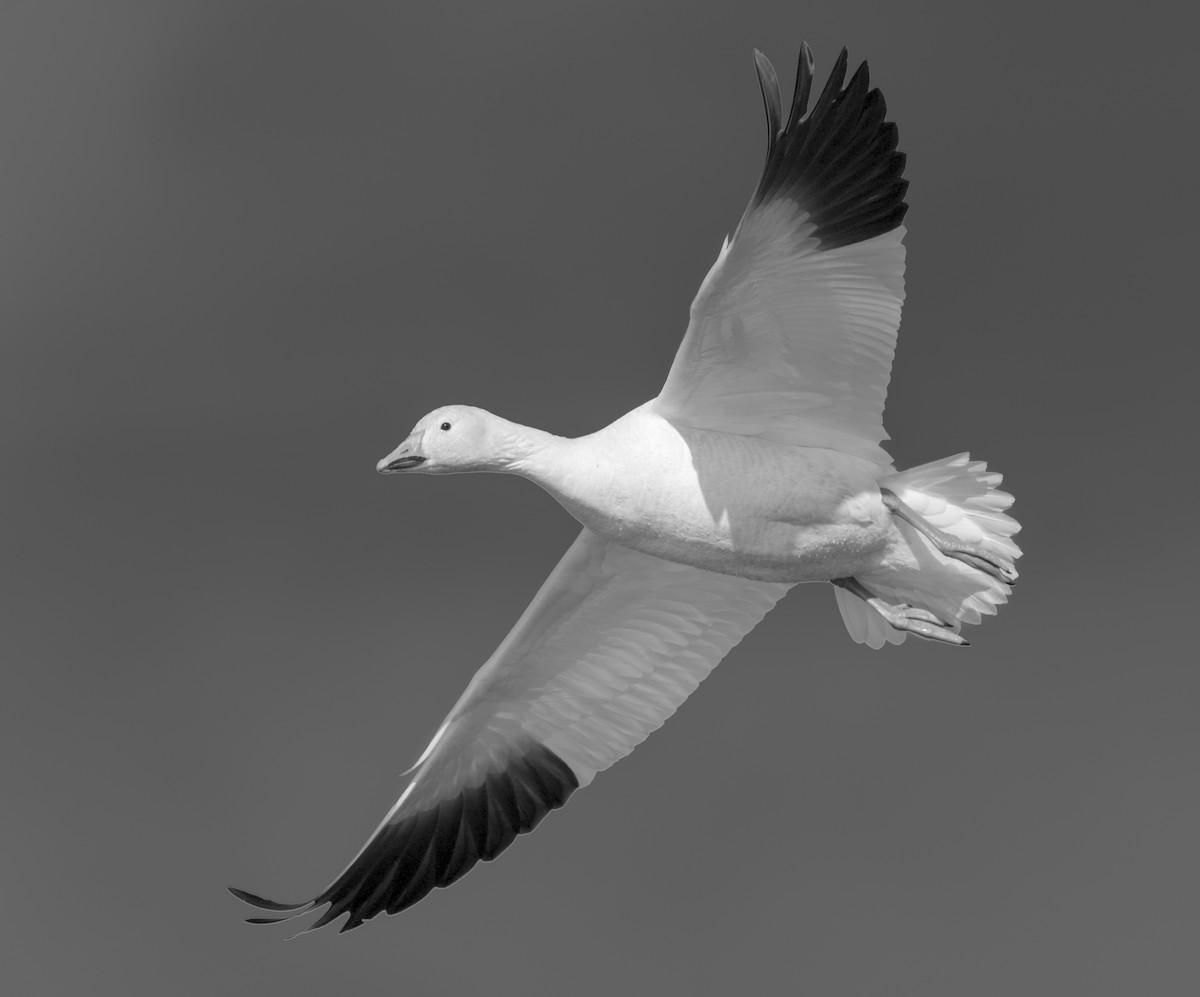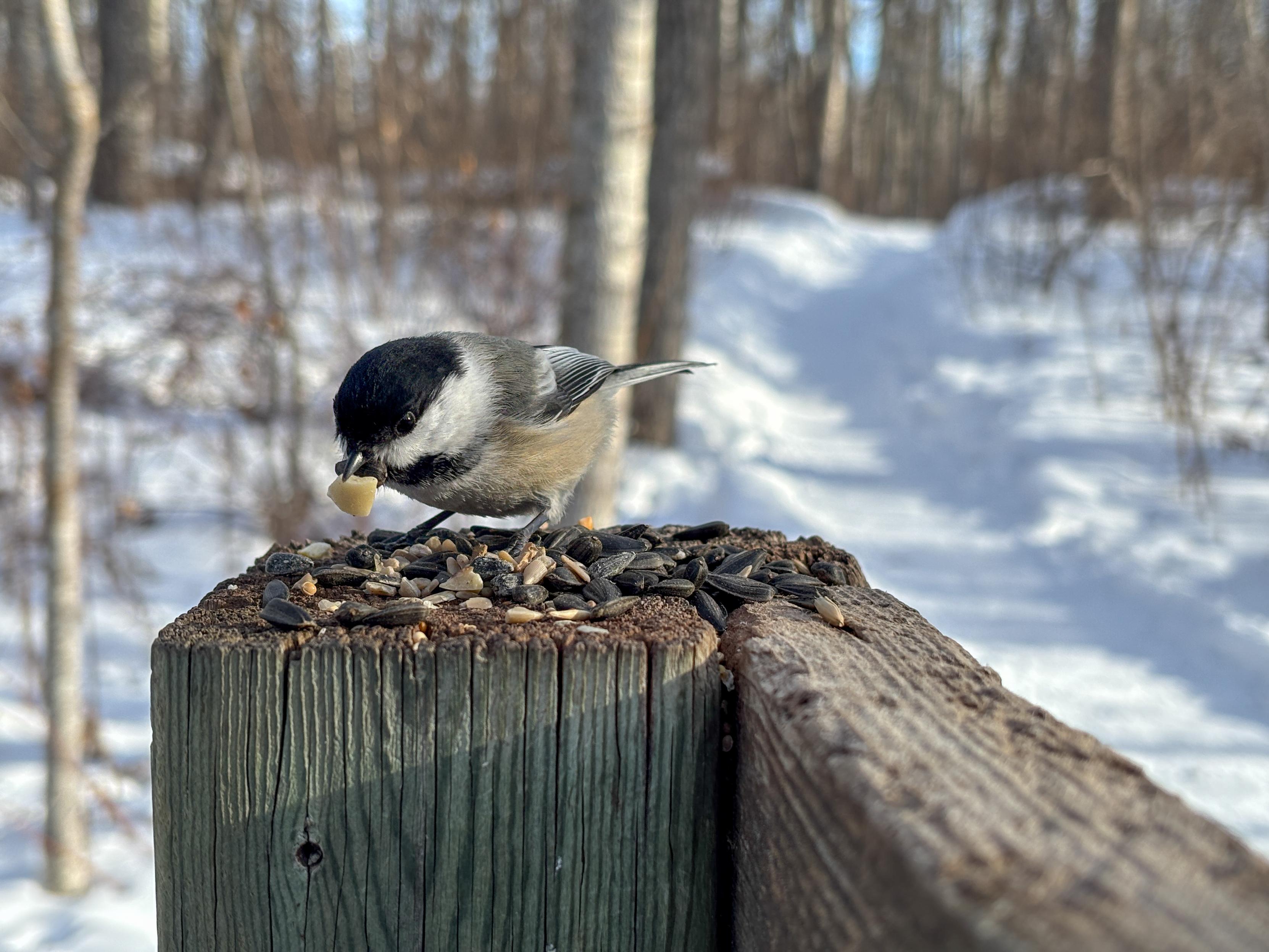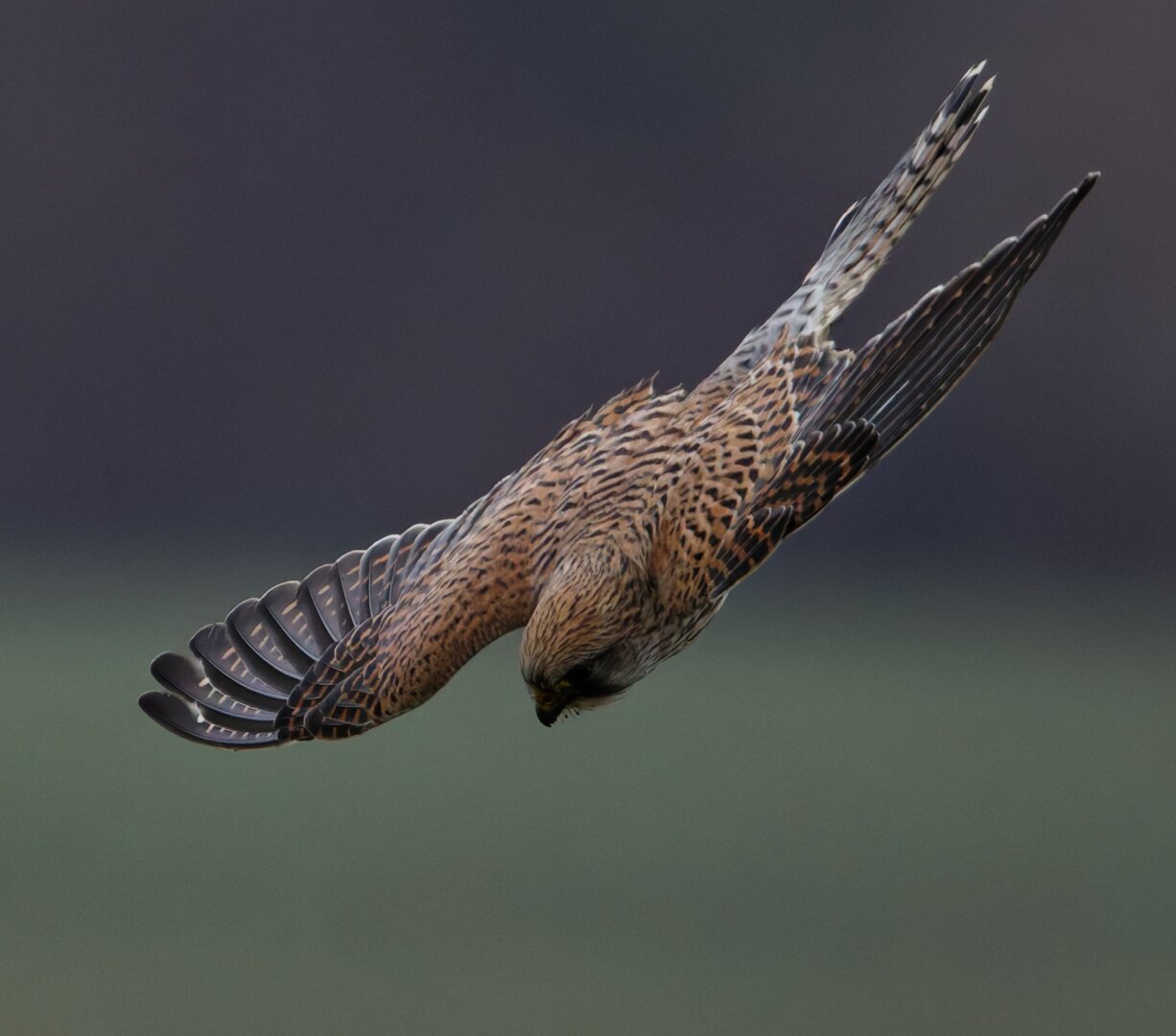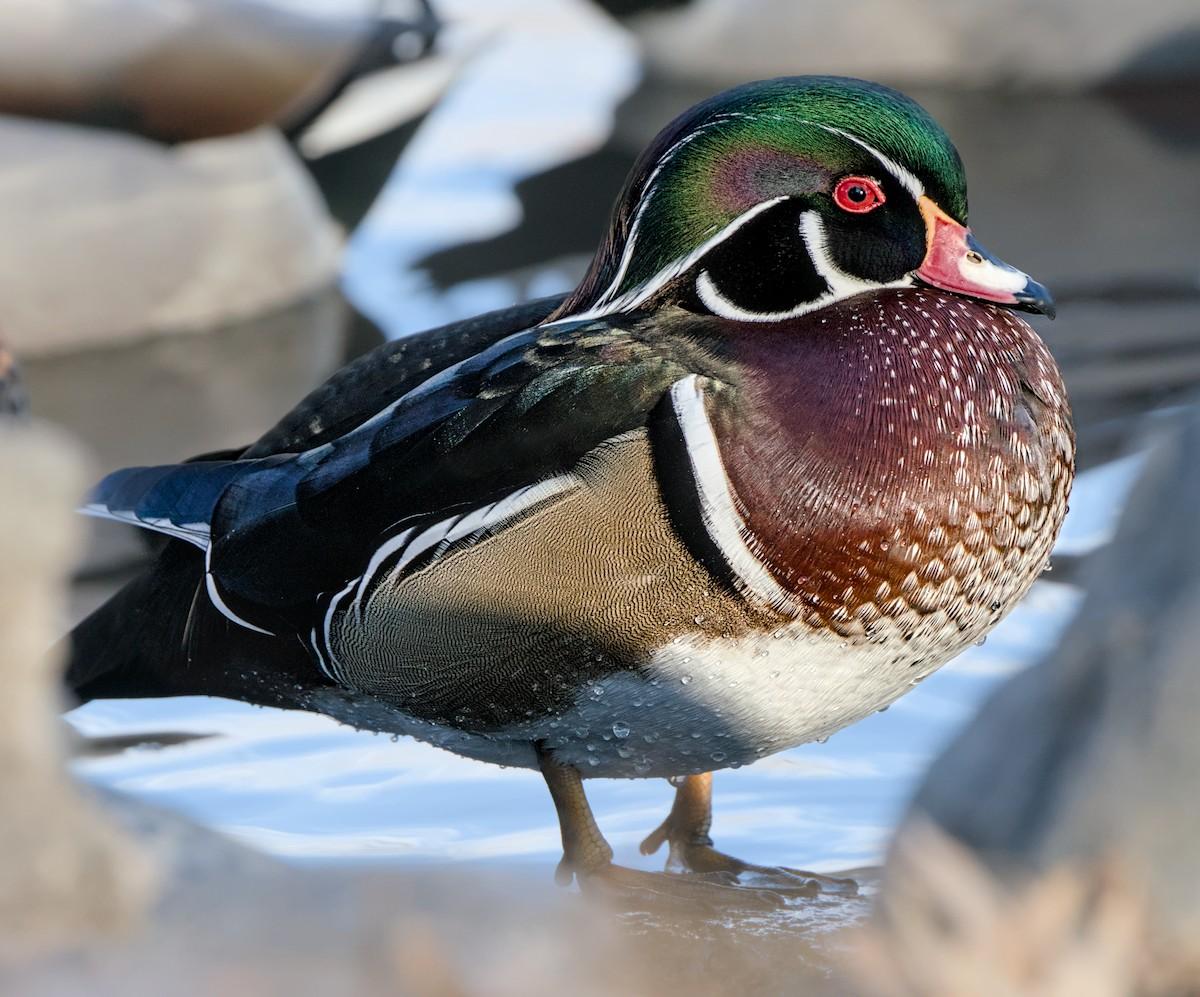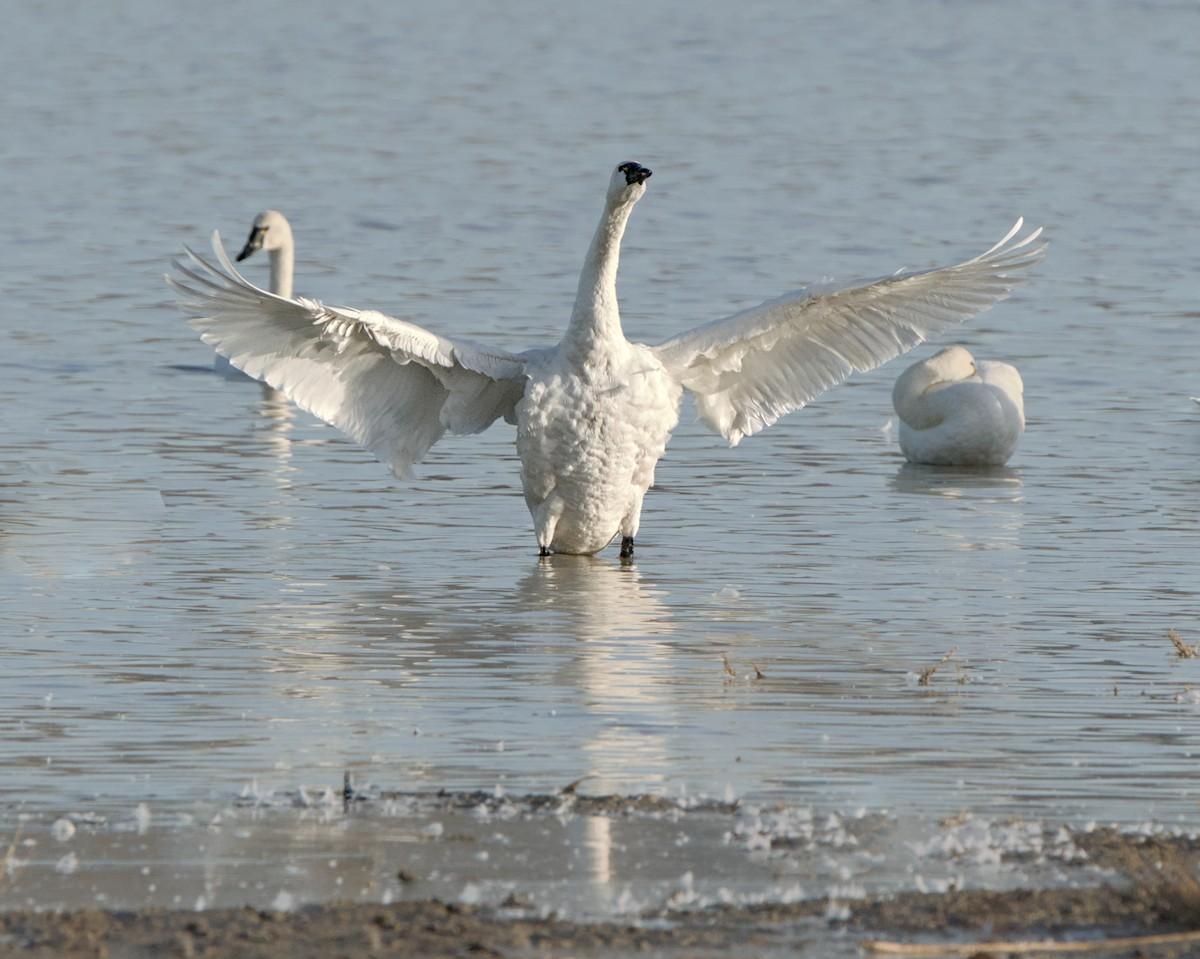Schwanzmeise mit dem "please-love-me! Blick"
#birds
I spent a freezing cold but delightful couple of hours watching a Dipper diving in the shallow waters of the burn running through my local wood today.
Dippers are the only passerine (perching) birds which dive and swim underwater, in search of freshwater shrimp and insect larvae, and they have a transparent nictating membrane over their eyes to protect them underwater (see photo).
#photography #Birds #nature #WildlifePhotography
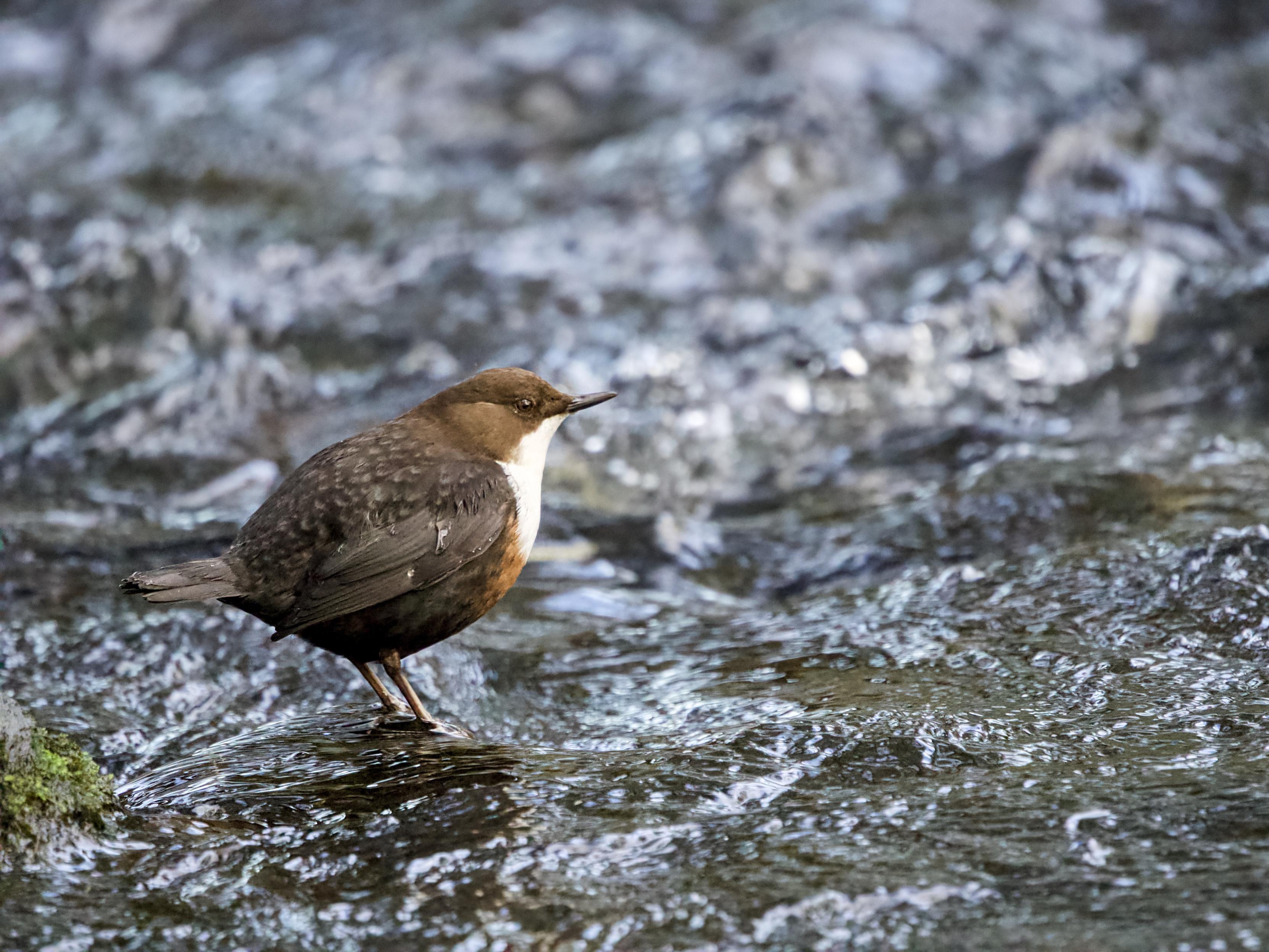
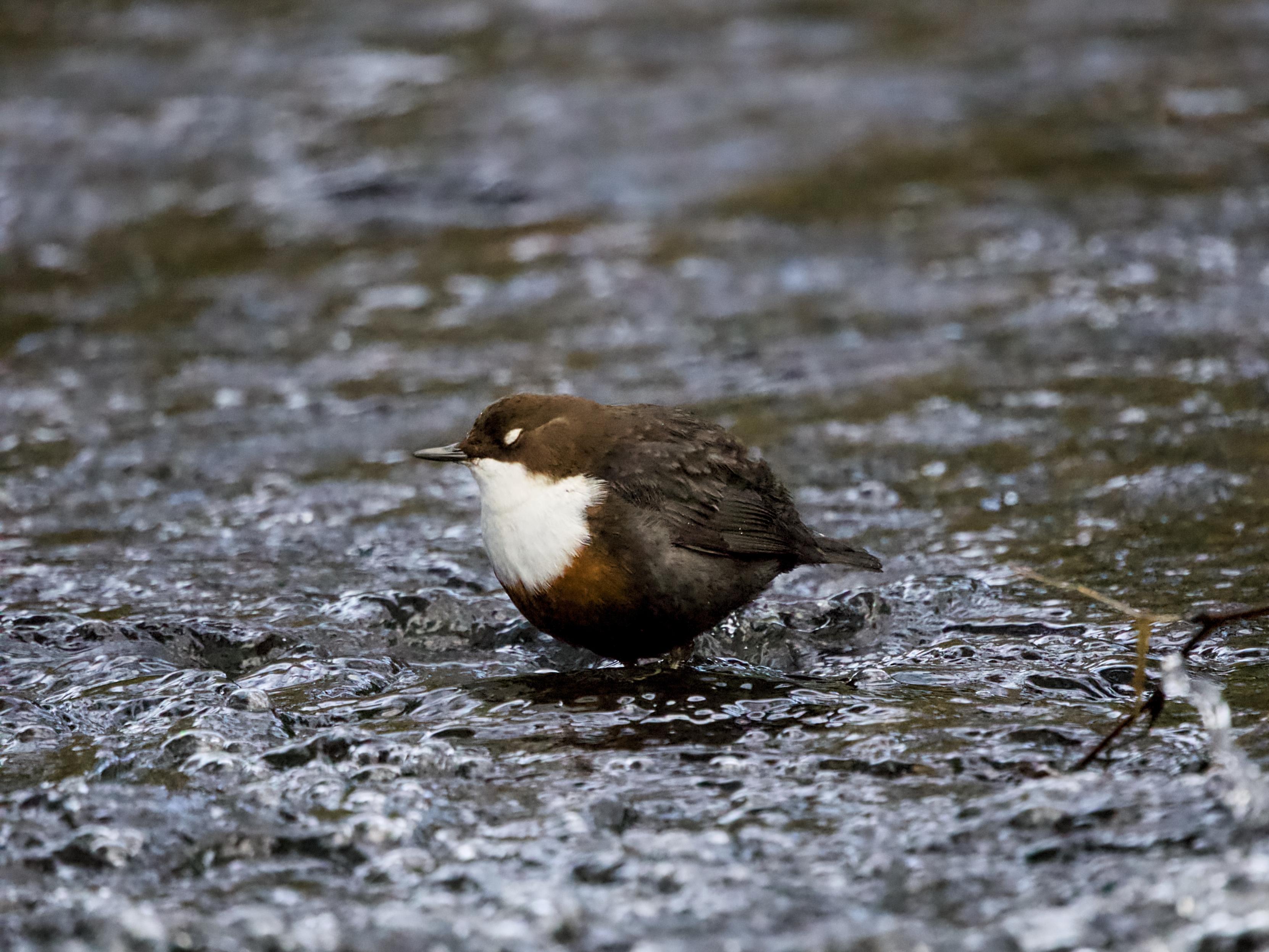

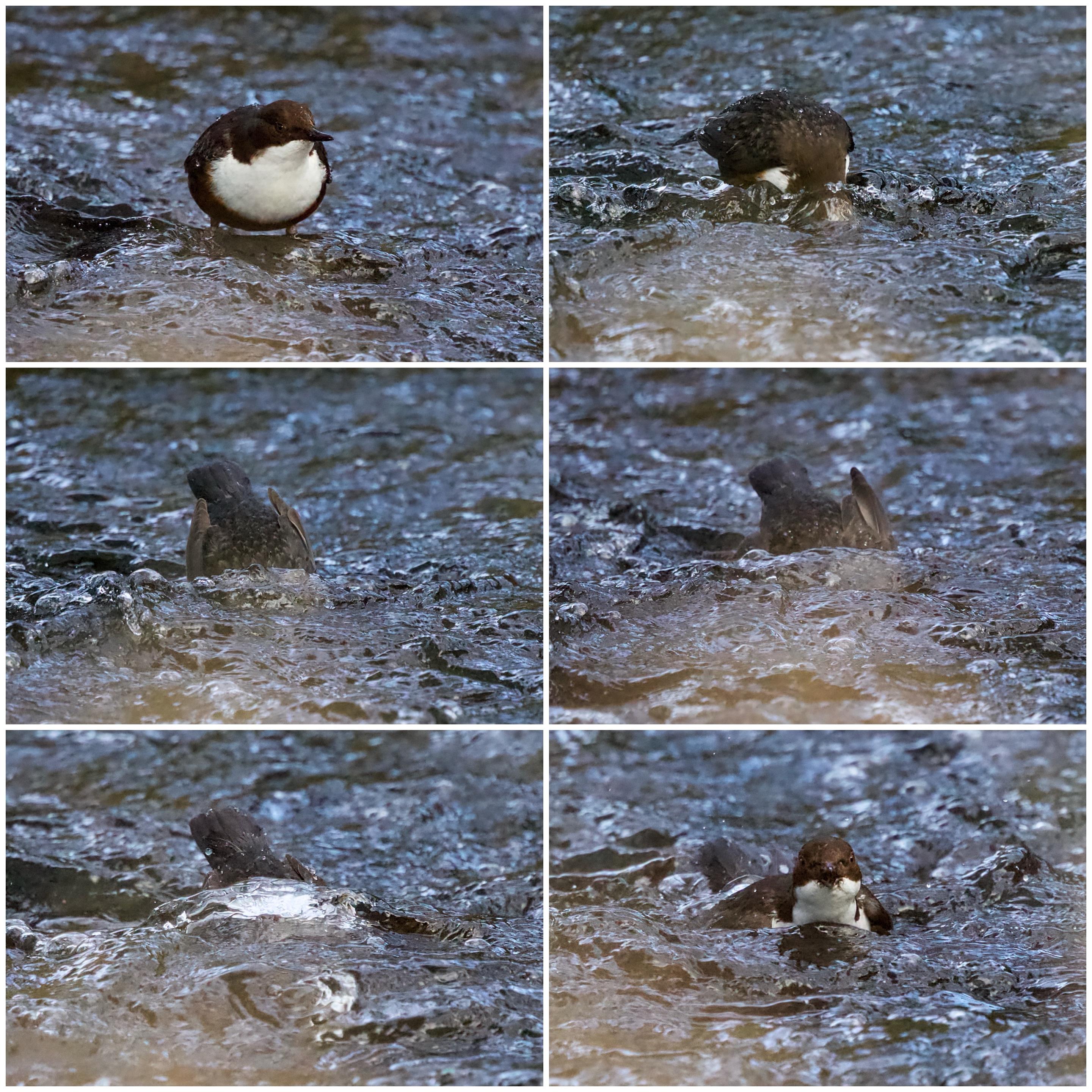
The mistle thrush likely got its name from its love of mistletoe, which makes this original drawing a great idea for a unique Christmas gift for a loved one.
https://folksy.com/find/item/8589968
#FediGiftShop #ScottishArtist #MastoArt #CreativeToots
#MistleThrush #Birds #OriginalArt #Drawing #Painting #Artwork #TraditionalArtist #ArtFromScotland #GiftIdeas #ArtShop #ShopIndy #SupportSmallBusiness #Christmas #ChristmasGifts
An orange-crowned warbler on the hummingbird feeder, maybe wondering where they’ve all gone.
#MondaysAreForTheBirds #birds #photography #BackyardBirds #BirdPhotography
Anser caerulescens (snow goose, white morph), Colusa National Wildlife Refuge, California.
#Birds #BlackAndWhite #BirdPhotography #Wildlife #California #Photography #Darktable
Day 8 of #ArtAdventCalendar: "Why We Return", a personal piece. It's an ode to childhood and returning to the same themes in our lives as time marches on. 🐦
2020, digital
#ArtAdventCalendar Day 7 - I love the spunk and ambition of chickadees. I witness them stuffing two seeds in their mouth more often than not. Occasionally three. Once, I had one take off with a full almond 😳
#Birds #BirdPhotography #BirdsOfMastodon #Wildlife #WildlifePhotography #yegPhotographer #CanadianPhotographer
While staring up into a tree looking at the tawny frogmouth nest I’ve been watching for a while a stranger walking past told me about another group of them nearby. It’s not the first time this has happened, I’ve similarly bestowed knowledge of our tawny friends on others I’ve met while bird watching. Loving these birds is like participating in the world’s most delightful and cooperative treasure hunt
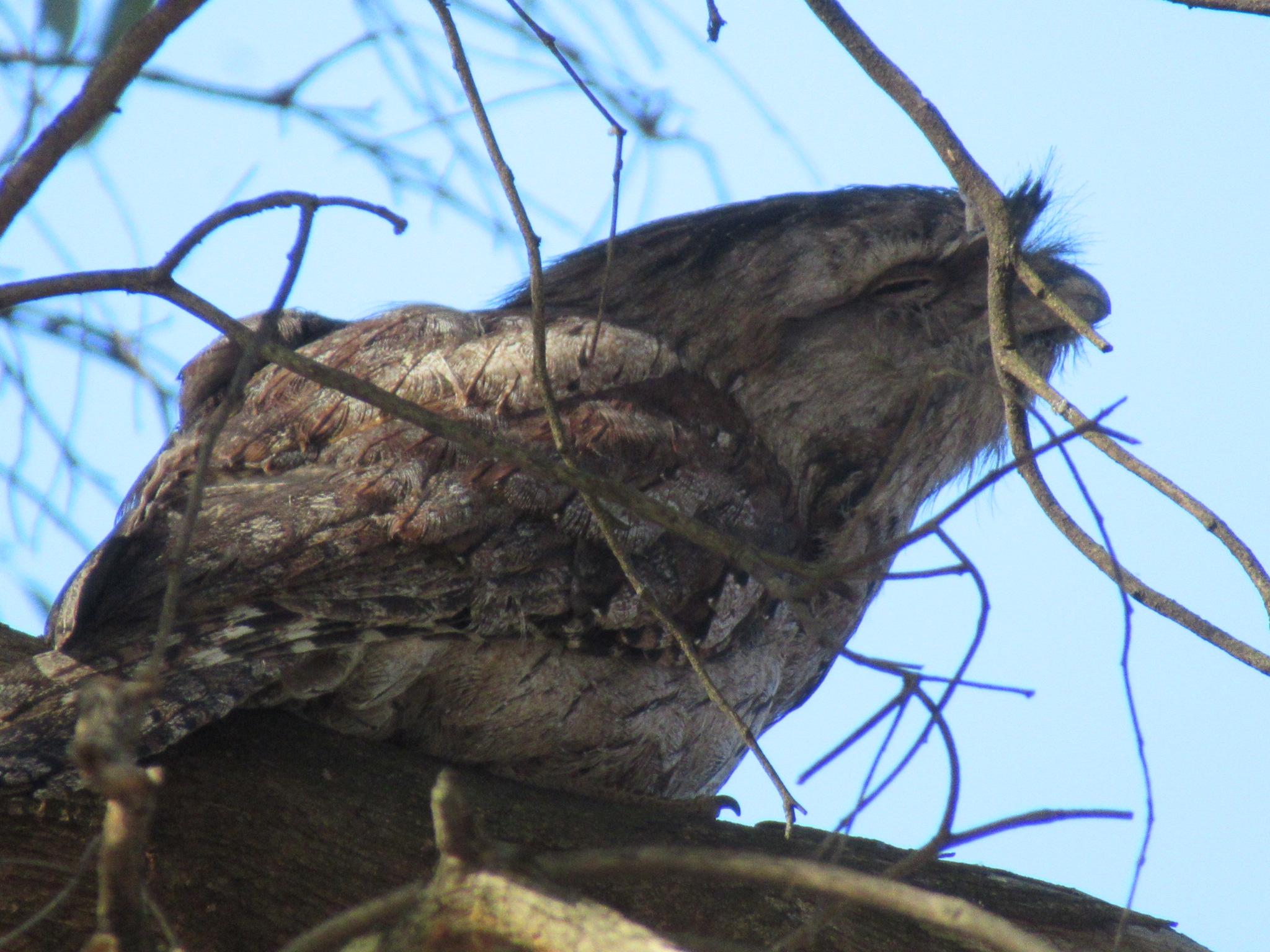
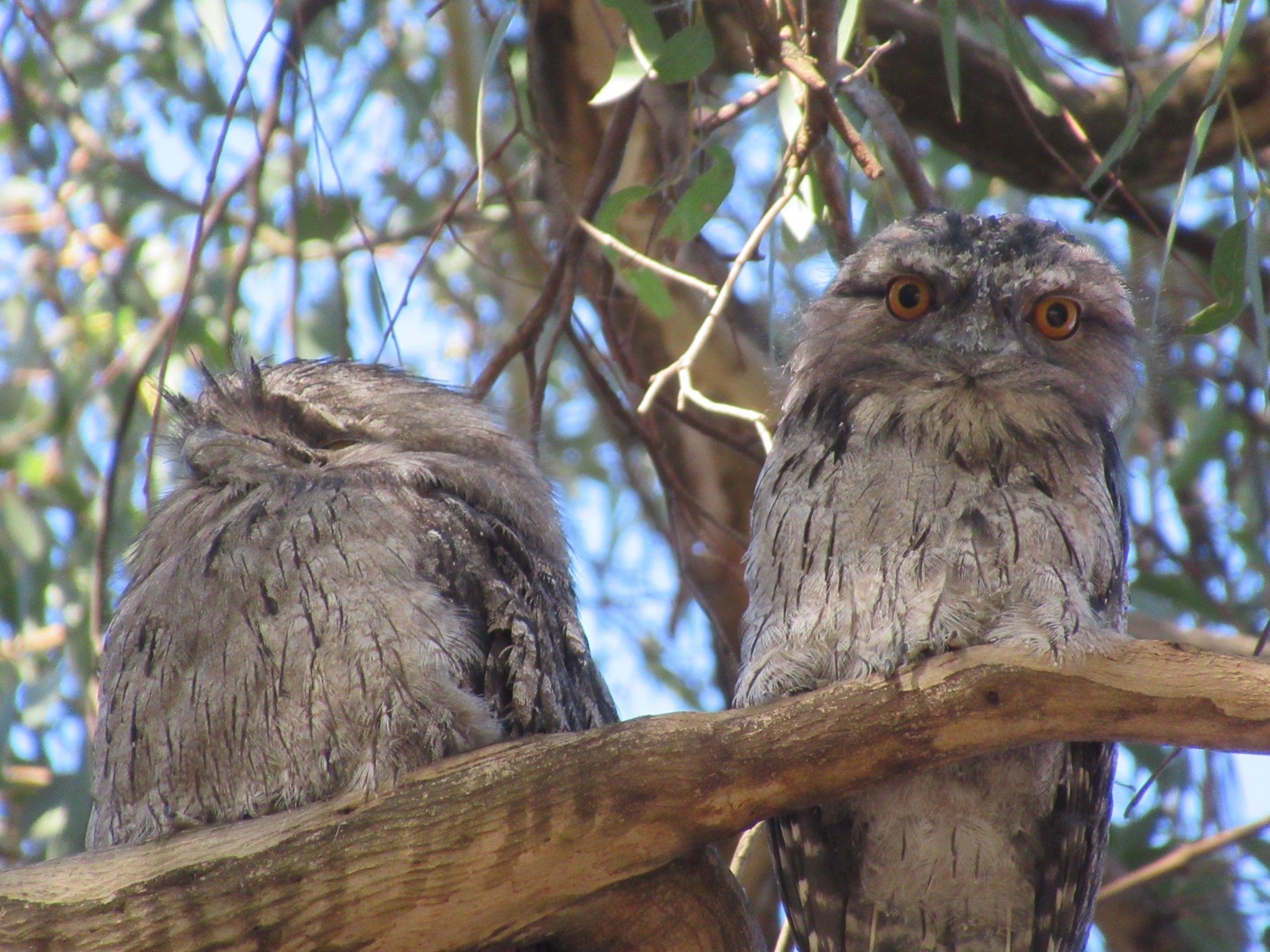


Aix sponsa (wood duck), Idlewild Park, Reno, Nevada.
#Birds #Nature #BirdPhotography #Wildlife #Photography #Darktable
This white stork with chicks would make a special Christmas gift for a bird lover, a new parent or parent to be.
You will find it in my Folksy shop...
https://folksy.com/items/8530278
#FediGiftShop #ScottishArtist #MastoArt #CreativeToots
#Stork #WhiteStork #Birds #OriginalArt #Drawing #Painting #Artwork #TraditionalArtist #ArtFromScotland #GiftIdeas #ArtShop #ShopIndy #SupportSmallBusiness #Christmas #ChristmasGifts
Nuthatch
Location: Barnwell Country Park
Date: 6th Dec 2025
#nature #birds #Wildlife #photography #NaturePhotography #BirdPhotography #BirdsOfMastodon #UK #BirdScrolling
Blue tit
Location: Barnwell Country Park
Date: 6th Dec 2025
#nature #birds #Wildlife #photography #NaturePhotography #BirdPhotography #BirdsOfMastodon #UK #BirdScrolling
#ArtAdventCalendar Day 6.
I took various royalty free photos as reference for this one, and made up the background in the colours of magpie feathers that you only see when the sun shines on them. I was happy with how I captured the bird, and the abstract elements were fun to experiment with.
Time lapse: https://makertube.net/w/iCmymA6cAttoys7fnU7ZLk
#DigitalArt #DigitalPainting #ClipStudioPaint #BirdArt #Birds #CreativeToots
Yellowlegs, salt marsh
Cygnus columbianus (tundra swan), Swan Lake a bit north of Reno, Nevada. And yes, that is really the lake's name. Swan lake is a ephemeral endorheic lake, although, it has been wet for over a decade.
Your body's black. It's hot and sunny. Surely you'd go rest in the shade?
Not if you're a blackbird!
Yesterday I was in the Christchurch Botanic Gardens on a hot norwester afternoon, and lots of the resident blackbirds were out sunbathing.
I spent a freezing cold but delightful couple of hours watching a Dipper diving in the shallow waters of the burn running through my local wood today.
Dippers are the only passerine (perching) birds which dive and swim underwater, in search of freshwater shrimp and insect larvae, and they have a transparent nictating membrane over their eyes to protect them underwater (see photo).
#photography #Birds #nature #WildlifePhotography




The mistle thrush likely got its name from its love of mistletoe, which makes this original drawing a great idea for a unique Christmas gift for a loved one.
https://folksy.com/find/item/8589968
#FediGiftShop #ScottishArtist #MastoArt #CreativeToots
#MistleThrush #Birds #OriginalArt #Drawing #Painting #Artwork #TraditionalArtist #ArtFromScotland #GiftIdeas #ArtShop #ShopIndy #SupportSmallBusiness #Christmas #ChristmasGifts
An orange-crowned warbler on the hummingbird feeder, maybe wondering where they’ve all gone.
#MondaysAreForTheBirds #birds #photography #BackyardBirds #BirdPhotography
